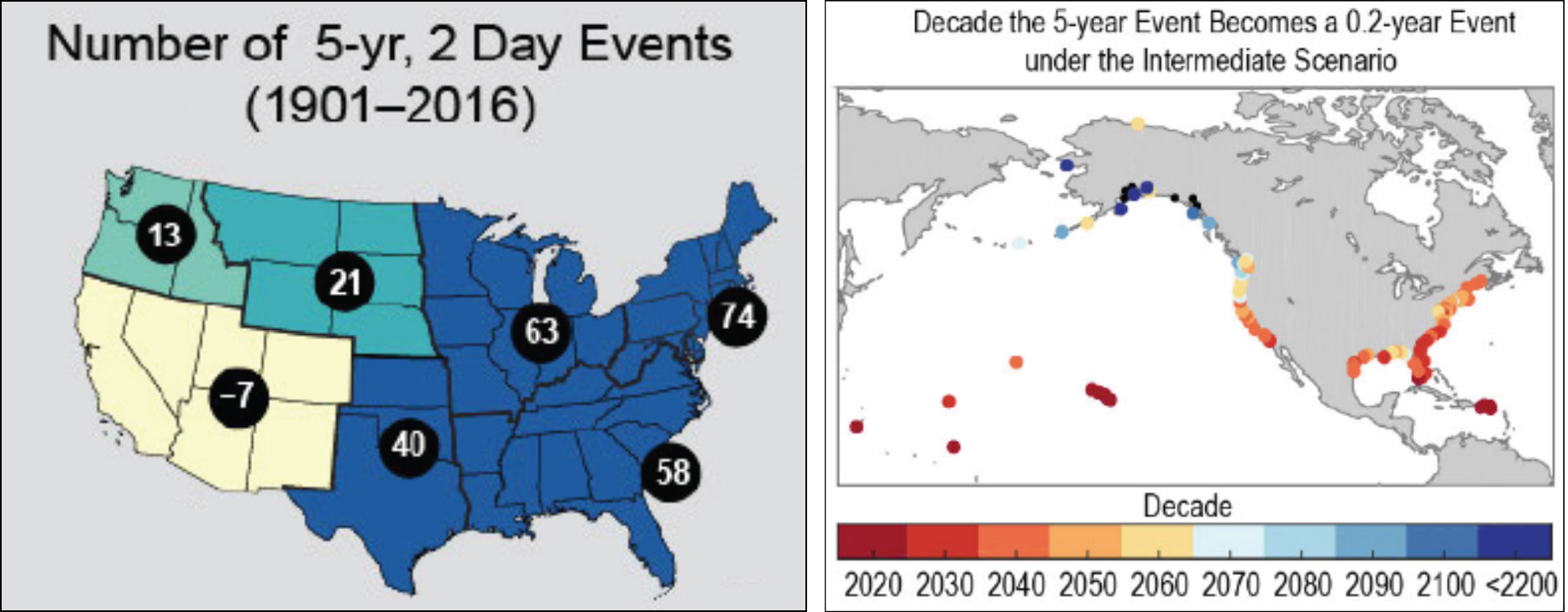Here’s a fascinating tweet from our commander-in-chief:
Wow – Now experts are calling #Harvey a once in 500 year flood! We have an all out effort going, and going well!
— Donald J. Trump (@realDonaldTrump) August 27, 2017
Once in 500 years? Hmmm. Here are a couple of relevant illustrations from the Fourth National Climate Assessment, which was recently made public:

Down on the Gulf Coast, the number of “precipitation events” that exceed the largest amount expected over five years has already gone up 40 percent since 1901. By about 2030, what used to be a 5-year event around Houston will occur every two months. This means that Hurricane Harvey used to be a 500-year event, but maybe not anymore. Maybe it’s now a 20 or 30-year event.
These kinds of extreme flooding events will increase thanks to (a) rising sea levels, (b) an increase in tropical storm intensity (though not frequency), and (c) greater rainfall from tropical storms. Here are a few excerpts from the report:
- Global mean sea level (GMSL) has risen by about 7–8 inches since 1900, with about 3 of those inches occurring since 1993 (very high confidence). Human-caused climate change has made a substantial contribution to GMSL rise since 1900 (high confidence)….Assuming storm characteristics do not change, sea level rise will increase the frequency and extent of extreme flooding associated with coastal storms, such as hurricanes and nor’easters (very high confidence).
- Both theory and numerical modeling simulations (in general) indicate an increase in tropical cyclone (TC) intensity in a warmer world, and the models generally show an increase in the number of very intense TCs.
- The average tropical cyclone rainfall rates within 500 km (about 311 miles) of the storm center increased by 8% to 17% in the simulations, which was at least as much as expected from the water vapor content increase factor alone.
- Urban flooding results from heavy precipitation events that overwhelm the existing sewer infrastructure’s ability to convey the resulting stormwater. Future increases in daily and sub-daily extreme precipitation rates will require significant upgrades to many communities’ storm sewer systems, as will sea level rise in coastal cities and towns.
Folks on the coast might want to think about urging President Trump to take this a little more seriously.













